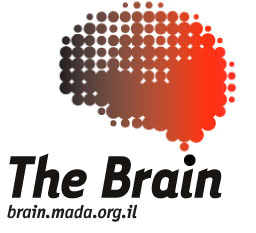


 |
||
|
Watch the video screen and listen to the sound - What do you hear? Now close your eyes and listen again - What do you hear now? In the earphones, you hear a person repeating the same syllable. On the screen, at the same time, you see a person repeating a different syllable. When conflicting information reaches two different senses, the brain tries to combine them, and we think we're hearing yet a third syllable different from the one actually being spoken. When the eyes and the ears receive two different kinds of information, the brain associates them with a single source. The result is a combined perception of something that doesn't really exist. Explanation: The combination of information from the two different senses takes place automatically. We have no control over it. Even when we're aware the situation has been manipulated to create an illusion, we can't control its effect on us. Related exhibit:
|
||

